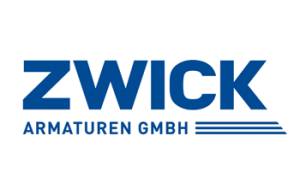Principle of operation
Safety valve is a safety device and, in many cases, the last line of defense. It is important to ensure that the safety valve is capable to operate at all times and under all circumstances.
Safety valve is not a process valve or pressure regulator and should not be misused as such. It should have to operate for one purpose only: overpressure protection.
Safety valve is a valve that acts as a fail-safe. An example of safety valve is a pressure relief valve (PRV), which automatically releases a substance from a boiler, pressure vessel, or other system, when the pressure or temperature exceeds preset limits. Pilot-operated relief valves are a specialized type of pressure safety valve. A leak tight, lower cost, single emergency use option would be a rupture disk.
Safety valves were first developed for use on steam boilers during the Industrial Revolution. Early boilers operating without them were prone to explosion unless carefully operated.
Vacuum safety valves (or combined pressure/vacuum safety valves) are used to prevent a tank from collapsing while it is being emptied, or when cold rinse water is used after hot CIP (clean-in-place) or SIP (sterilization-in-place) procedures. When sizing a vacuum safety valve, the calculation method is not defined in any norm, particularly in the hot CIP / cold water scenario, but some manufacturers have developed sizing simulations.
There is a number of reasons why the pressure in a vessel or system can exceed a predetermined limit.
API Standard 521/ISO 23251 Sect. 4 provides a detailed guideline about causes of overpressure.
The most common are:
• Blocked discharge
• Exposure to external fire, often referred to as “Fire Case”
• Thermal expansion
• Chemical reaction
• Heat exchanger tube rupture
• Cooling system failure
Each of the above listed events may occur individually and separately from the other. They may also take place simultaneously. Each cause of overpressure also will create a different mass or volume flow to be discharged, e.g., small mass flow for thermal expansion and large mass flow in case of a chemical reaction. It is the user’s responsibility to
determine a worst-case scenario for the sizing and selection of a suitable pressure relief device. There are two main types of safety valves. Spring loaded safety valves and pilot operated safety valves.
The spring force Fs is transmitted via the spindle to the plate closing against the nozzle, which together with the plate closes the process and ensures sealing. This condition is maintained as long as the spring force is greater than the force Fp generated by the pressure at the valve inlet.
Valve Position

Valve Closed
In a direct spring loaded safety valve the closing force or spring force is applied by a helical spring
which is compressed by an adjusting screw. The spring force is transferred via the spindle onto the
disc. The disc seals against the nozzle as long as the spring force is larger than the force created by the pressure at the inlet of the valve. The figure shows the enlarged nozzle and disc area of a safety valve with the forces acting on the disc.
Valve opening
In an upset situation a safety valve will open at a predetermined set pressure. The spring force Fs is acting in closing direction and Fp, the force created by the pressure at the inlet of the safety valve, is acting in opening direction. At set pressure the forces Fs and Fp are balanced. There is no resulting force to keep the disc down on the seat. The safety valve will visibly or audibly start to leak (initial audible discharge).
The pressure below the valve must increase above the set pressure before the safety valve reaches a noticeable lift. As a result of the restriction of flow between the disc and the adjusting ring, pressure builds up in the huddling chamber. The pressure now acts on an enlarged disc area. This increases the force Fp so that the additional spring force required to further compress the spring is overcome.
The valve will open rapidly with a “pop”, in most cases to its full lift.


















